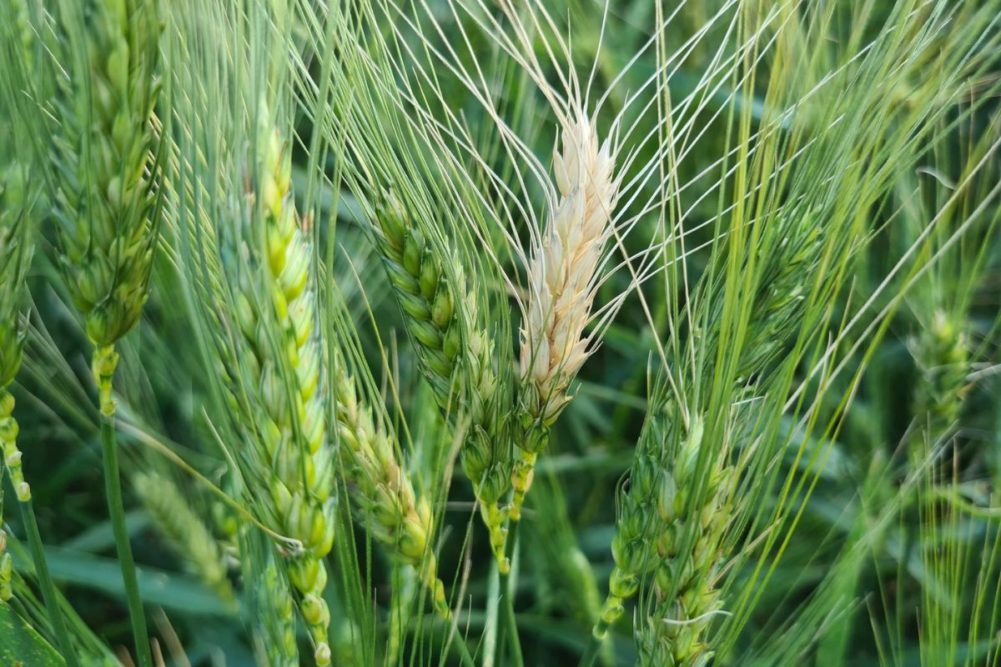Researchers, led by Senthold Asseng from the Technical University of Munich, have conducted a groundbreaking study modeling the future spread of wheat blast, a fungal disease that poses a serious threat to global wheat production. This study explores the potential implications for global food security.
Background
Wheat blast, caused by the fungus Magnaporthe oryzae, first emerged in 1985 in Brazil and has since spread to neighboring countries. The disease’s reach extended to Bangladesh in 2016 and Zambia in 2018. The study involves collaboration between researchers from Germany, Mexico, Bangladesh, the United States, and Brazil.
Regional Impact
The research indicates that South America, southern Africa, and Asia will be the most affected regions. Up to 75% of wheat cultivation areas in Africa and South America could be at risk. Countries like Argentina, Zambia, and Bangladesh, which were previously slightly impacted, are also expected to face increased risk.
New Territories Affected
The fungus is penetrating new territories, including Uruguay, Central America, the southeastern US, East Africa, India, and eastern Australia.
Risk Assessment
The study suggests low risk in Europe and East Asia, except for specific regions such as Italy, southern France, Spain, and the warm and humid areas of southeast China. Climate change-induced drier conditions may decrease the risk, but this also poses challenges due to decreased yield potential.
Impact on Climate Change-Affected Regions
Regions affected by wheat blast are already vulnerable to the direct consequences of climate change. Food insecurity is a significant challenge, and the demand for wheat continues to rise, especially in urban areas.
Mitigation Strategies
To combat future yield losses, farmers in affected regions may need to switch to more robust crops or adopt resistant wheat varieties. CIMMYT, in collaboration with NARs partners, has released wheat blast-resistant varieties, offering a successful strategy when combined with other measures like optimal sowing dates.
Study Methodology
The researchers combined a simulation model for wheat growth and yield with a newly developed wheat blast model. This comprehensive approach considers environmental conditions, weather, and plant growth, focusing on the sensitive phase during ear maturation.
Conclusion
The study emphasizes the need for proactive measures to address the potential 13% reduction in global wheat production by 2050 due to wheat blast. Climate-resilient crops, resistant varieties, and optimal farming practices are crucial for maintaining food security in vulnerable regions.
Multiple-Choice Questions (MCQ):
- What is the primary cause of the potential 13% reduction in global wheat production by 2050?
- A) Rising temperatures
- B) Changing precipitation patterns
- C) Wheat blast fungus
- D) Increased CO2 emissions
- Which regions are expected to be most affected by the future spread of wheat blast?
- A) North America and Europe
- B) South America, southern Africa, and Asia
- C) Australia and New Zealand
- D) Middle East and Central Asia
- What is the potential risk of wheat blast in Europe and East Asia, according to the study?
- A) High risk in all regions
- B) Low risk in all regions
- C) Low risk except for specific regions
- D) High risk except for specific regions
- Which organization has released wheat blast-resistant varieties to mitigate the effects of the disease?
- A) United Nations
- B) CIMMYT
- C) WHO (World Health Organization)
- D) FAO (Food and Agriculture Organization)
- What phase of wheat growth is particularly sensitive, according to the study?
- A) Germination
- B) Flowering
- C) Ear maturation
- D) Harvesting
